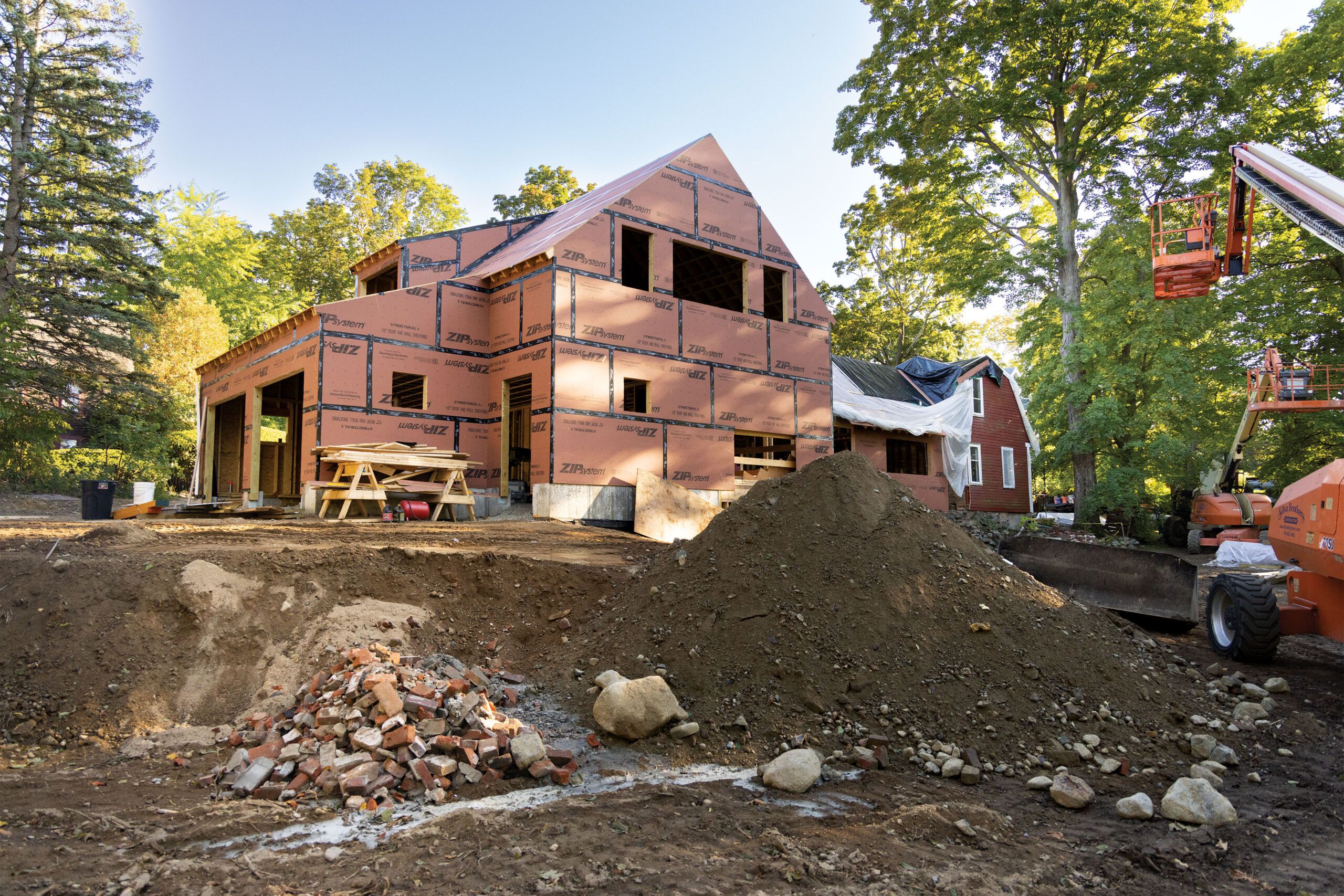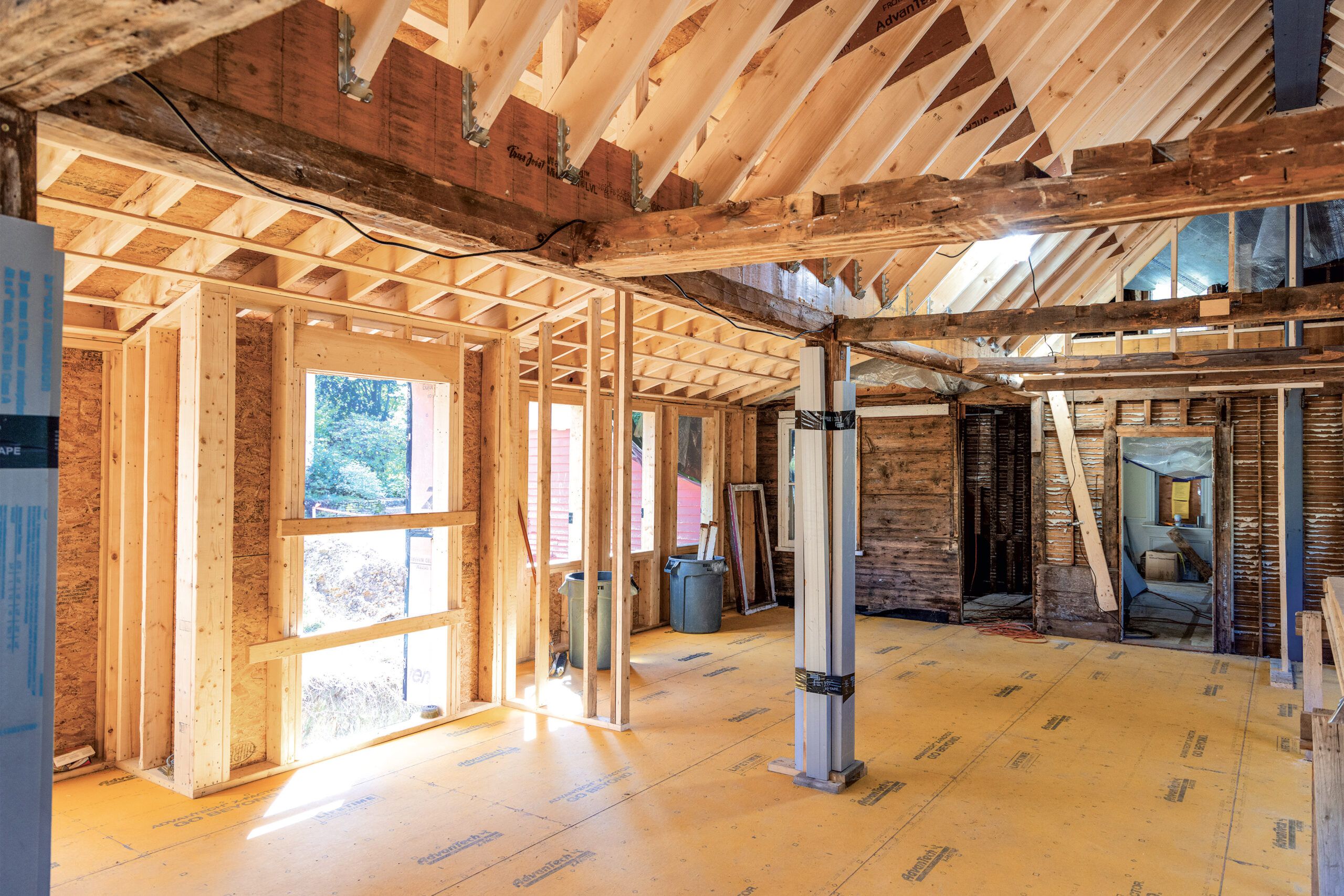For two people who love old houses, are inspired by water views, and consider walkability essential, the red-clapboard timber-framed house in Ipswich, Massachusetts, checked all the boxes. The 11/3-acre property lies along a pastoral stretch of the Ipswich River, and it’s a 10-minute stroll from the heart of the well-preserved town, founded in 1634, its streets lined with shops and restaurants.
Spurred by the work-from-anywhere possibilities created by the pandemic, the house’s new owners, Bill von Oehsen and Helen Moore von Oehsen, saw the property as a chance to return to Helen’s native state from the Washington, D.C., area, where they both worked—Bill as an attorney, Helen as a scientist. History buffs, they loved that a Revolutionary War soldier once owned the house, which is today classified as First Period, meaning one of the country’s oldest.
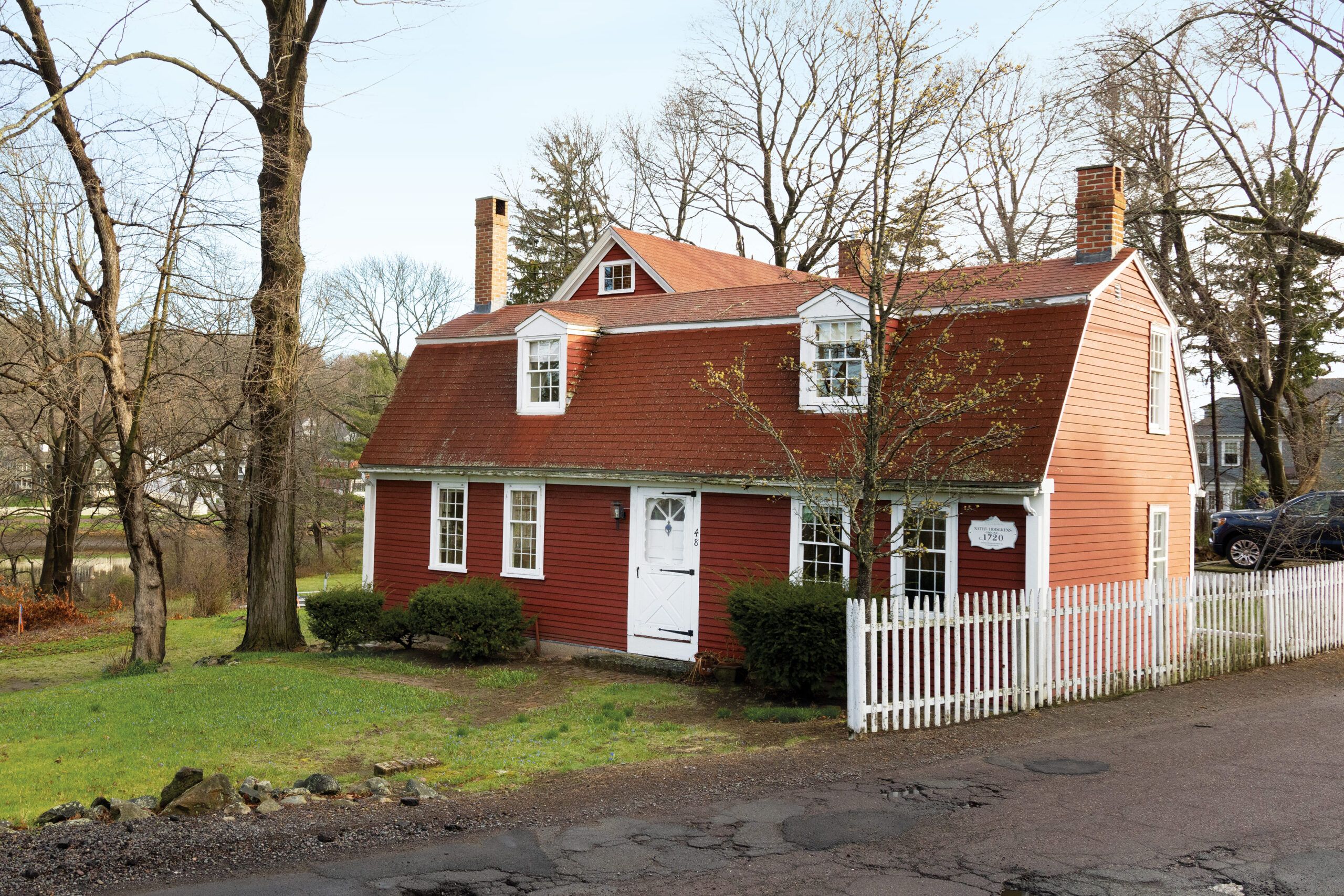
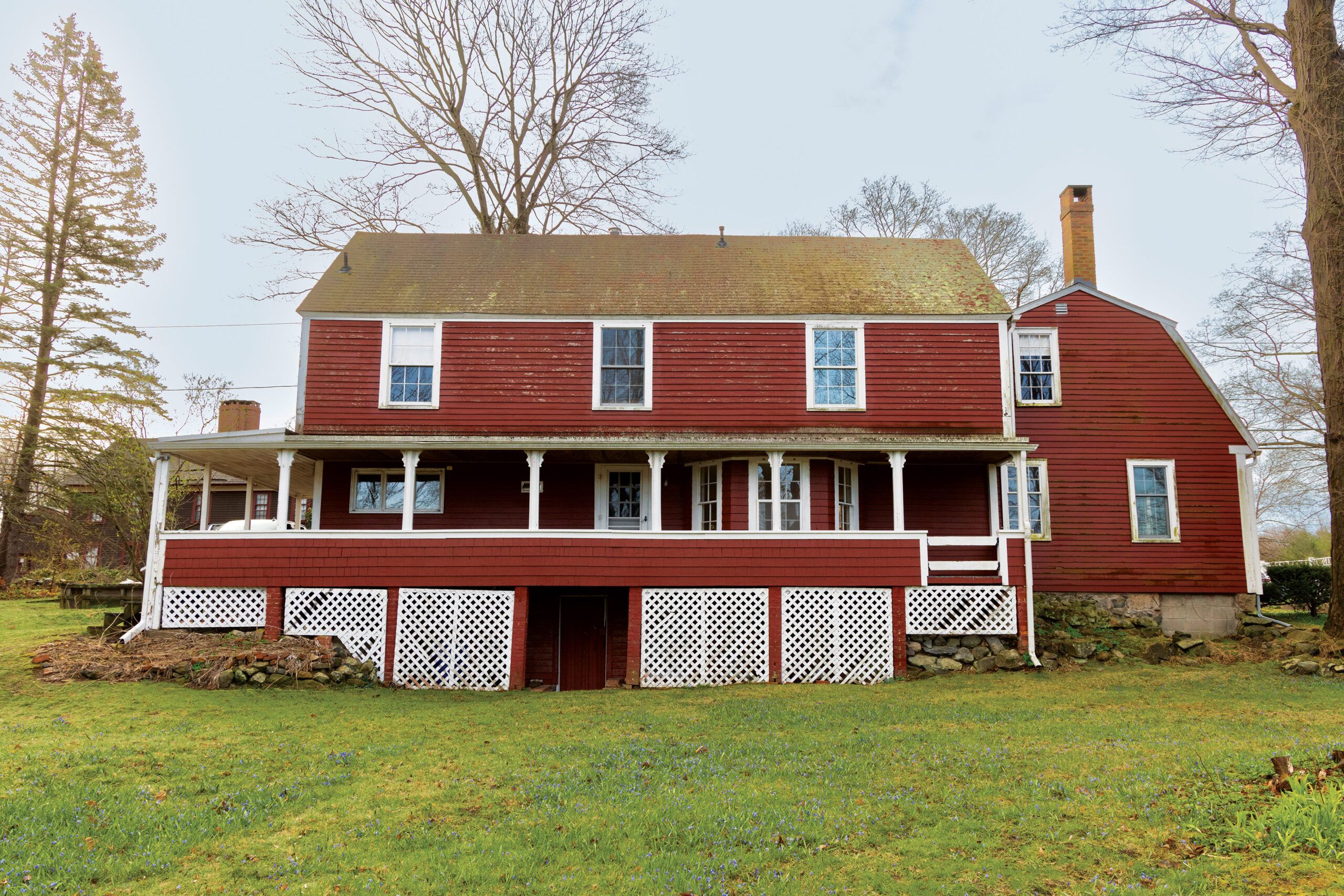
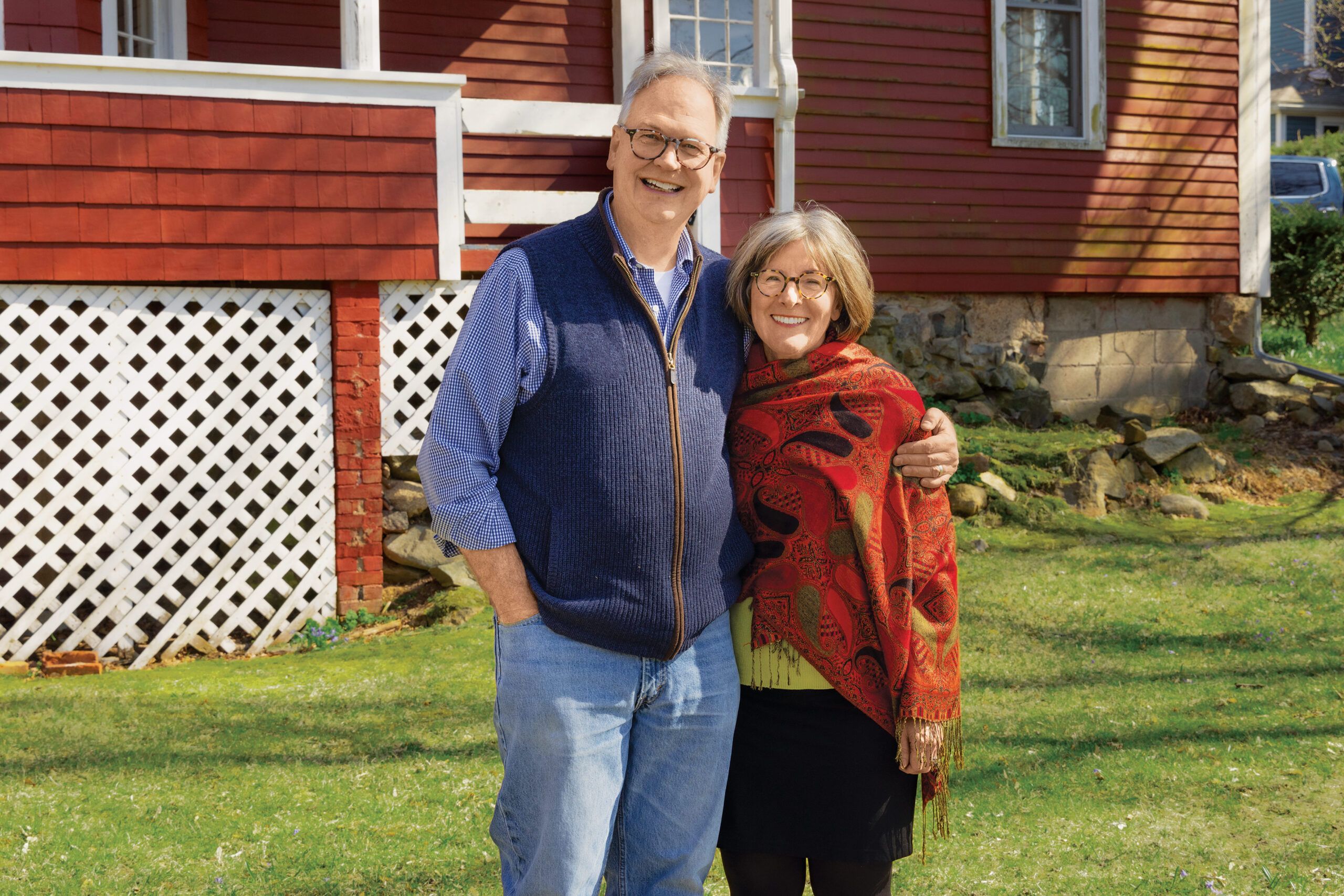



The original house dates to 1720 and offers a close-up look at how homes took shape back then: Exposed heavy oak and pine timbers form the framing, with pegs still holding the original mortise-and-tenon joinery in place. Two rooms make up the downstairs and two bedrooms the upstairs, topped with a space-expanding gambrel roof.
That 1,300 square feet of living space was still intact, but as is typical of homes that grew with their inhabitants’ needs, the house also featured a two-story ell addition—with a timber-framed first floor built shortly after 1720 and a second floor tacked on in the 1870s—capped by a gabled roof. That extra 1,000 square feet held the kitchen, a quarter bath (toilet only), the dining room, two bedrooms, and the house’s only full bath.
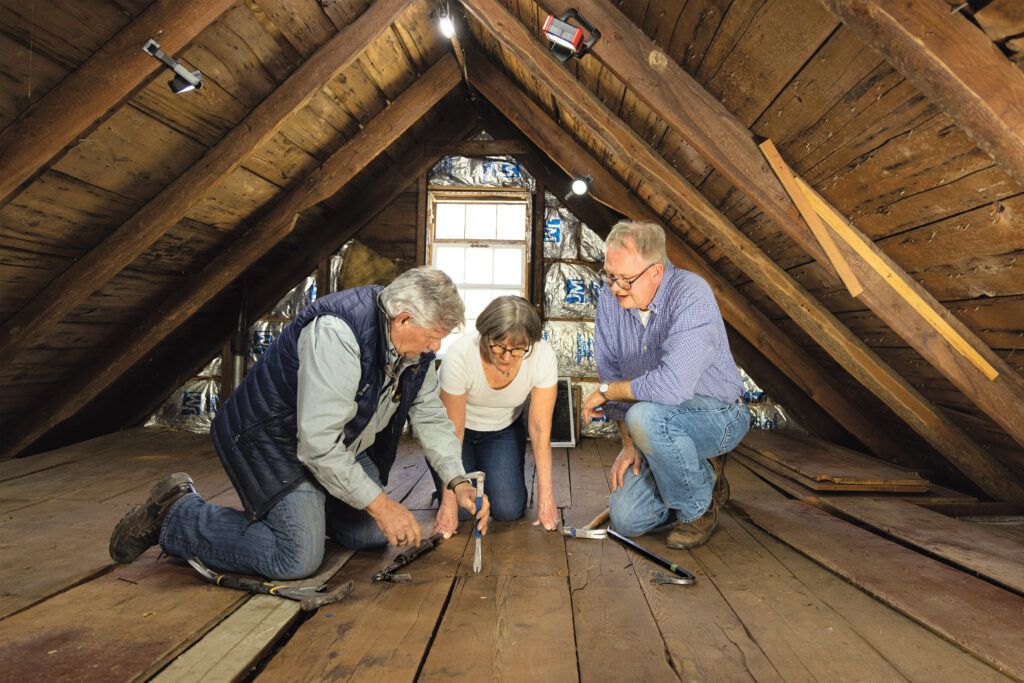
Having renovated old houses previously, Bill and Helen appreciated all the history the house held but were also clear-eyed about its faults: sagging floors, the dated full bath, low ceilings (6-foot-tall Bill couldn’t stand up in the dining room), a cramped kitchen, and noisy baseboard heaters. Still, they were undeterred. “We are dreamers,” Bill says. “We could see the potential.”
For the ell, the couple envisioned an open-plan layout with plenty of headroom in place of the individual, low-ceilinged rooms. They also hoped for a primary suite with a view of the river. They needed two offices to work remotely, and they wanted guest rooms for visits from their four adult children, friends, and extended family. At the same time, they hoped to keep as many of the house’s historical features as possible. When engineers determined that the existing ell needed to come down due to its poor condition—inadequate support had led to floors sagging and joists twisting from the load—they were disappointed, but quickly allowed the possibilities to unfold.
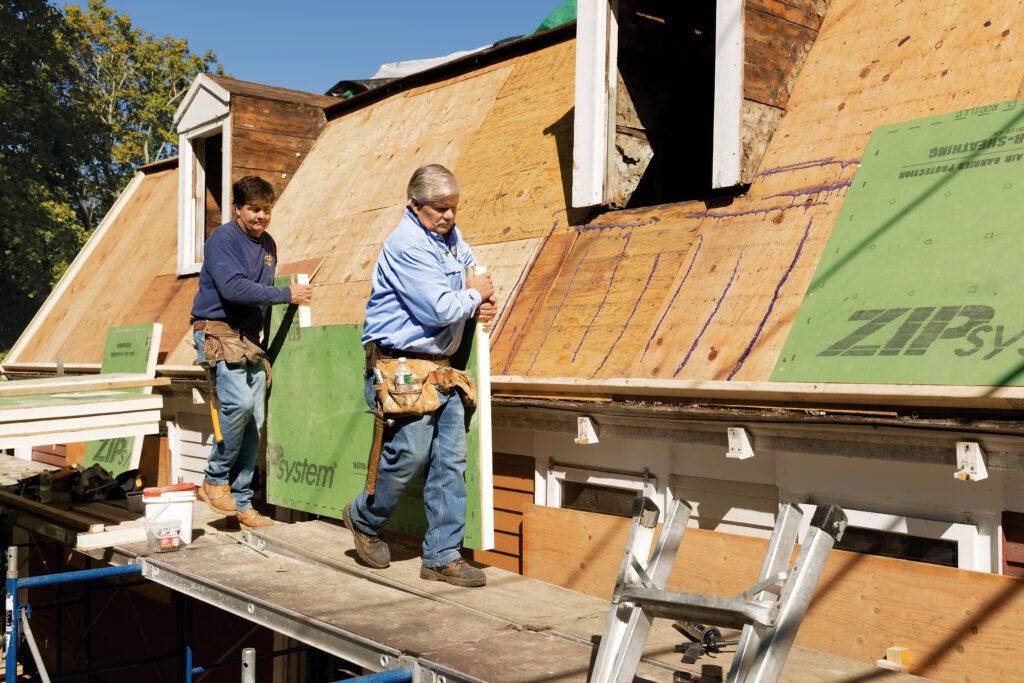
To help turn their dreams into reality, the couple enlisted local architect Ben Nutter and TOH home builder Charlie Silva—and teamed up with This Old House, which is documenting the project as part of its 44th television season.
“From the beginning, Bill and Helen’s intention was to preserve the house’s history,” says Nutter, who was well aware of the architectural scrutiny the house would get. “The challenge was to create additional spaces that would meet setback restrictions from the river and also win design approval from the town’s preservation commission.”
Even with so many other old houses in Ipswich, people know the house because of that gambrel roof, says town historian Gordon Harris. “There are dozens of surviving Cape Ann Gambrels from Gloucester to Rockport, but this house is one of only three gambrels in Ipswich,” Harris says, adding that despite its age and distinctive roofline, it should not be confused with a Dutch Colonial. “The Dutch influence didn’t exist here at the time, and the interior timber-framing style practiced here by English colonial builders differed from the method used by the Dutch carpenters in the New York area,” one of the birthplaces of the Dutch Colonial style.
Nutter proposed building a new one-story ell in the same spot but with a slightly enlarged footprint, and having it serve as a connector to a two-story gabled addition that would feature a primary suite and home office upstairs and a sunroom downstairs, plus an attached garage. Because of its lowered roofline, the one-story ell would take a back seat to the original house.
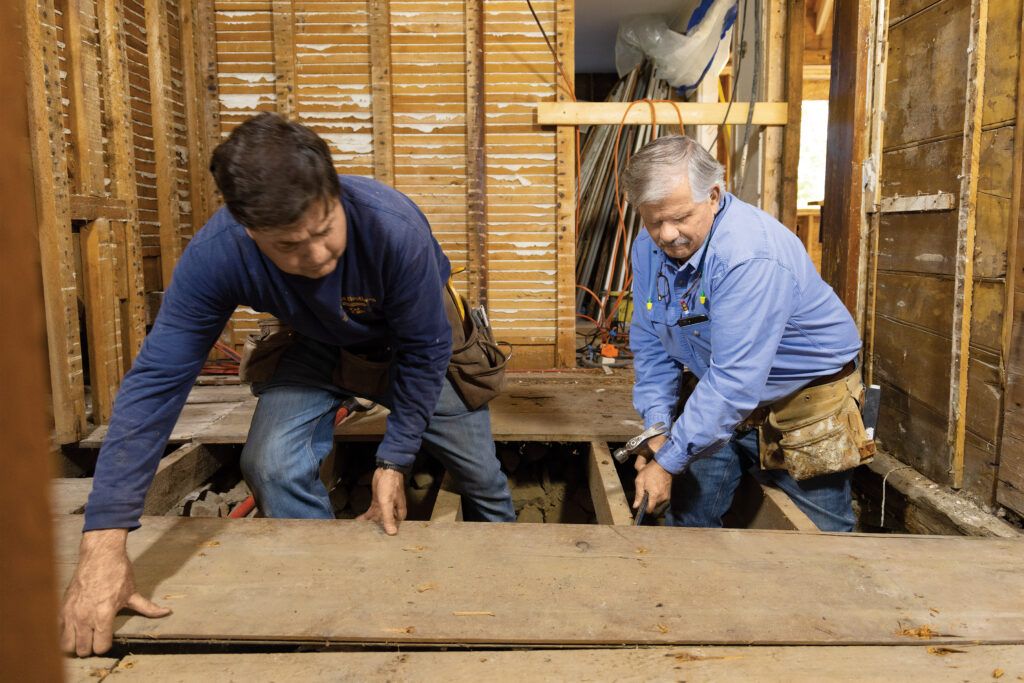
To lend a feeling of history—and to add some drama to the new ell, Nutter’s design reuses elements salvaged from the previous ell: a new cathedral ceiling lined with reclaimed sheathing boards and rafters, antique pine floorboards, and portions of the old timber frame rebuilt to define the open-plan kitchen-dining-family-room area.
“Reusing antique timbers from the old ell is one of the keys to keeping the character of this house,” says TOH general contractor Tom Silva, who admired the original timber frame’s elegant joinery, adding: “Those early builders really were artisans.” To ensure that the reworked timbers would retain their authenticity, Charlie turned to timber frame specialist Arron Sturgis, who liked what he saw on close inspection.
“These oak timbers were built to last, and they have,” says Sturgis. He tagged all the pieces before the original ell was demolished, carefully removed them, and then resized them to provide comfortable headroom in the new open-plan kitchen area. Reinstalled, the timbers lend some support to the new ell, but a steel ridge beam, steel posts, and new framing bear the majority of the load.
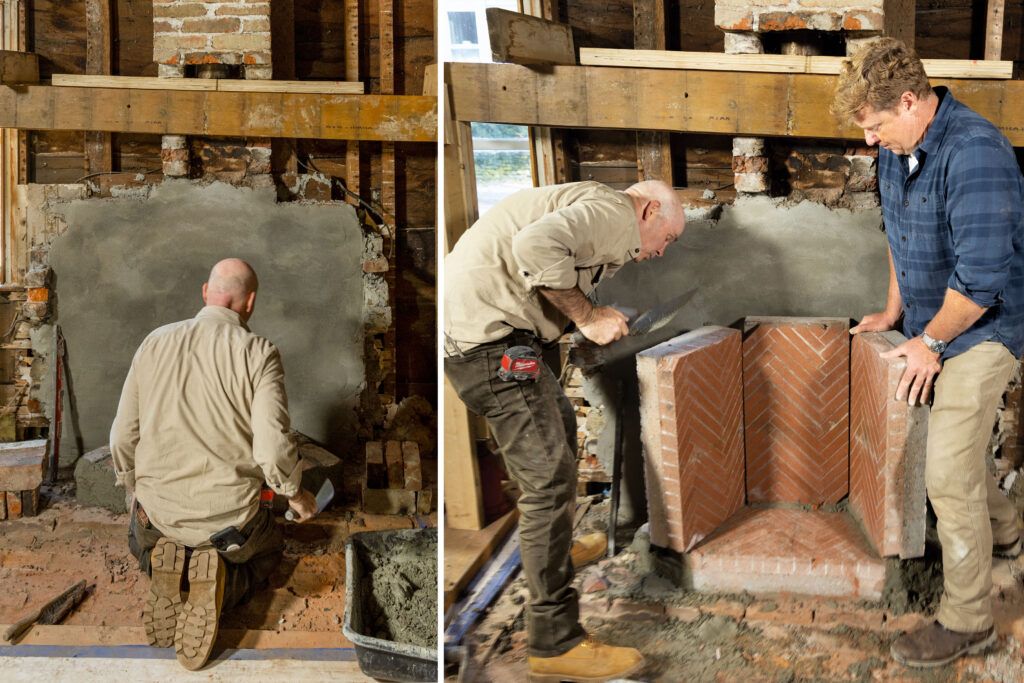
In another example of marrying old and new, the fireplace in what will become Bill’s office, a downstairs room in the original house, will be rebuilt as a Rumford. This space-saving design, which dates to the late 18th century, features a shallow, widely angled firebox with a tall throat that reaches up the flue. “The old fireplace was a mishmash of a rebuilt firebox and hearth, with cabinetry that ate up a lot of floor space,” says TOH mason Mark McCullough, who suggested the change. “A Rumford burns more efficiently, throws off more heat, and, since it is shallower, won’t protrude as much into the room.”

The basement of the old house and the original ell, with its exposed rubblestone walls and tight proportions, was initially overlooked as usable space. Indeed, the part of the basement under the old house has limited headroom and will most likely hold mechanicals. The part of the basement under the new ell, however, evolved into living space.
Once Charlie’s crew poured the foundation needed to support the new ell and added in-floor hydronic radiant heat there, the team realized the possibilities. Nutter adjusted the plan to include a 10-by-20-foot walk-out space, possibly a workshop, leading to a river-facing patio. He also added a below-grade bathroom, which required an ejector pump to send waste up to the sewer lines above. Working with plumbing contractor Brian Bilo, TOH plumbing and heating expert Richard Trethewey installed the ½ horsepower pump that makes the basement bath possible. “It’s a great way to make use of this lower level and get even more enjoyment from the house,” says Richard.
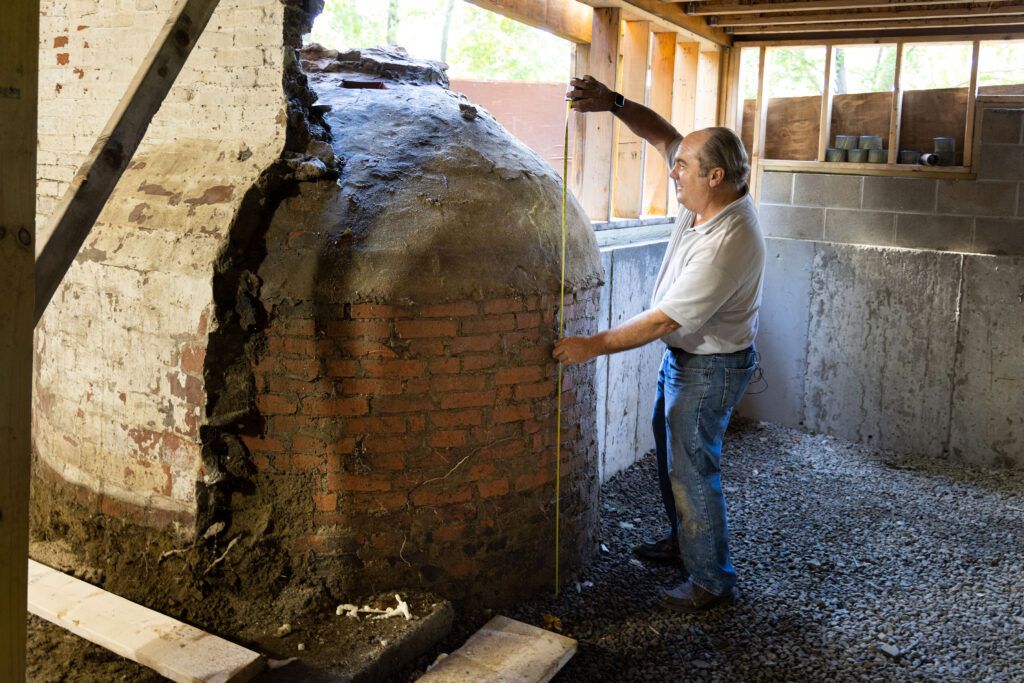
The property’s prized riverside location came with challenges of its own. “When I first saw it, the property had a wonderful park-like feeling, but a number of the large trees were invasive Norway maples in decline,” says landscape designer Rue Sherwood. The area near the water’s edge turned out to be overgrown with invasive species of various kinds as well, and conservation restrictions meant they couldn’t be removed. Sherwood’s plan includes wildflower plantings farther from the water’s edge and focuses on areas near the house. “With the beauty of the river, adding native plants around the house will enhance the setting even more,” says TOH landscape contractor Jenn Nawada, who is collaborating on the plant selections.
Throughout the process so far, homeowners Bill and Helen have put their commitment to preservation into action, even pitching in to pull up the old attic floorboards. As work continues—the ambitious project is expected to take nearly a year—they continue to keep one dominant image in their heads for reassurance. Says Bill: “We can’t wait to wake up to that river view.”

